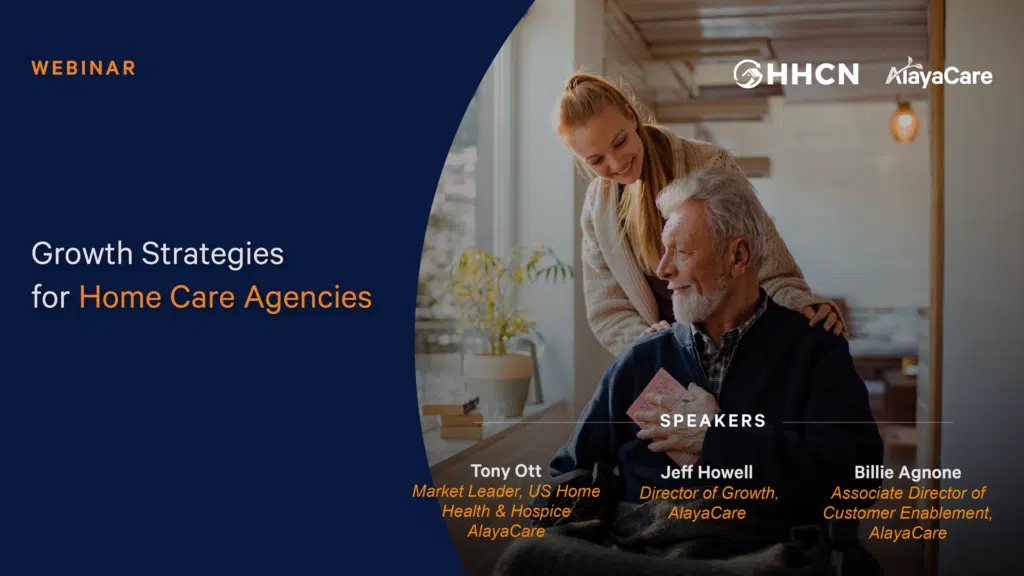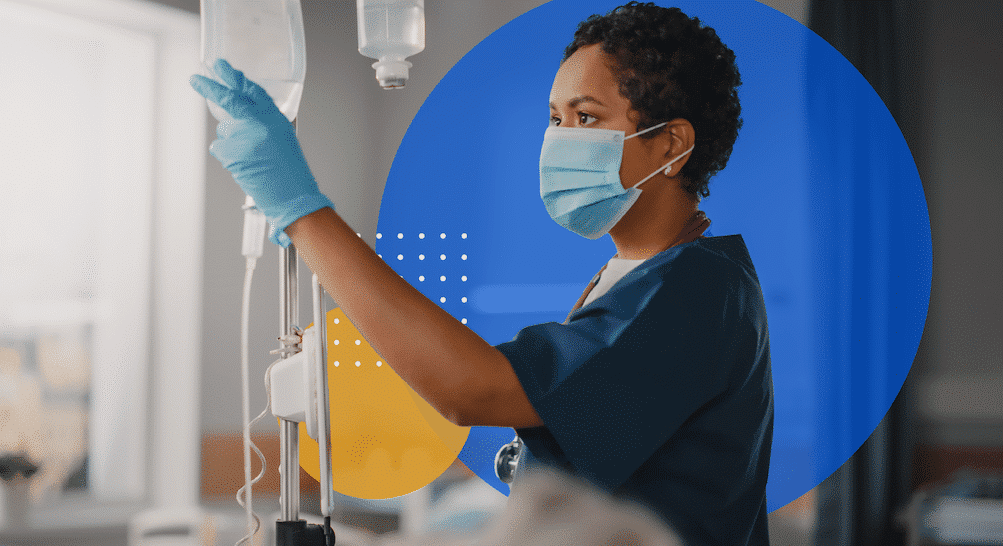Blog
What You Need to Know – Home Health Value Based Purchasing

The U.S. Centers for Medicare and Medicaid Services predicts that health spending will grow at an average annual rate of 5.4 percent for 2019-28 and to reach $6.2 trillion by 2028, according to the guide Value-Based Purchasing and the Role of Home Care Technology.
While the U.S. routinely ranks first in the world in healthcare spending, indicators show that health performance in the country lags well behind other comparable nations. So, we spend the most money per capita, but our collective health does not improve over others who spend less. That gave rise to the value-over-volume idea creating a shift to Home Health Value-Based Purchasing (HHVBP).
A quick recap on the HHVBP pilot program
In 2015, the Centers for Medicare & Medicaid Services (CMS) published the final rule for HHVBP, which outlines a fundamental shift in the way home care is delivered which marked the beginning of the migration from a fee-for-service model to a new model that intends to build a more efficient healthcare system based on better care delivery, and better patient outcomes.
Learn more about value-based payments vs fee-for-service in our blog: More home care funding is coming. What does this mean for agencies?
At a high level, the HHVBP program is a model required by the Accountable Care Act that CMS is hoping will result in better delivery of care, better outcomes, and reduced costs; it is anticipated to be the most significant change to Medicare since 2000.
What outcomes were measured and how?
Program performance scores are calculated based on quality measures and are determined by your process and outcome measures. A formula was used that considers both an agency’s achievement and improvement scores, while also considering baselines and benchmarks using data from OASIS, Medicare claims, HHCAHPS surveys, and other reported data on a specific set of 24 measures. Agencies were evaluated quarterly receiving reports on their performance compared to their baseline in previous quarters, as well as comparing their performance against competing agencies within the same state.
In those chosen nine states, the agencies did not see payment adjustments for their 2016 performance until 2018. Agencies with the highest performance results compared to their baseline and against the competition in the same state will receive an increase in reimbursement. Those with the lowest performance results will see a decrease in their pay.

What to know about the HHVBP roll-out to all 50 states
Now that the pilot has concluded and is deemed a success, HHVBP officially rolled out to all 50 states in 2022 for pre-implementation. With the overall goals of HHVBP being better health, better care, and lower costs, the focus is on disease management, preventing re-admissions, and improving outcomes.
Organizations delivering care that are prepared for this shift will be the same ones that thrive in a new marketplace. Is your organization ready for this shift to VBP? Read our guide Value-Based Purchasing and the Role of Home Care Technology to learn more about how the market is shifting towards HHVBP and what successful strategies home care businesses have implemented so far.
HHVBP key dates:
2022 – pre-implementation year
2023 – first performance year with data used to determine the first VBP payment
2025 – first payment year with adjustments
How much you’d expect to save with HHVBP
The value of preparation will affect reimbursement, as those agencies who perform above average will share in the savings up to a 5% maximum and those who perform below average will lose reimbursement up to 5% compared to similar-sized agencies across the country.
According to a survey on VBP conducted by AlayaCare and Home Health Care News (HHCN), 42% of care providers project that value-based contracts will account for more than half of their revenue in the next 3-5 years.
How can I prepare my agency for the upcoming VBP roll-out?
In a value-based payment model, home care providers need to understand and manage patient risk and clinical documentation verification more than ever before; EHRs and telehealth tools will become crucial for survival in the home care space. Advanced analytics will also become a must-have to help care workers be more predictive and proactive in their decision-making processes.
Here are some things you can do to help prepare your agency for the shift:
- Become more familiar with the HHVBP model and measures.
- Consider hiring a consultant to assess your agency’s current performance in your value-based processes and outcomes.
- Start considering new plans and strategies for improving your agency’s HHVBP measures.
- Keep an eye out for new information from CMS regarding the pilot program and HHVBP requirements.
- Make sure your agency’s software solution is up to date, has the capabilities to perform reliable clinical documentation, in-depth analytics, and reporting, and can carry consistent high-quality OASIS data.
What benefits can I expect from HHVBP?
- Optimized outcomes
- Improved delivery of care
- More efficient, higher-value care
- Greater accountability among providers
- Greater collaboration and connectivity among providers involved with any one patient
- Reduced risk of fragmented care
- Opportunities for great data analysis, both clinical and financial
How can I leverage technology to achieve these better outcomes to greet HHVBP?
It is clear that technology will be necessary to manage the incoming world of VBP. Agencies will need the right home health care software to track how patients and clients are doing and demonstrate the value of the care delivered. Those who run referring sources like hospitals and skilled nursing facilities will want to know this information more than ever.
Technology plays a leading role in the shift toward value and outcomes-focused care. Agencies need the ability to benchmark and report on patient outcomes and care quality, which necessitates capturing more health data and more robust analytics. AlayaCare offers the means to first collect and report on the data for payers, MCOs, and referral sources and allows care providers to use AI tools to predict adverse events and see trends to intervene before seeing any failing VBP metrics.
As a leading provider of an end-to-end home care software platform, AlayaCare offers a mix of real-time telehealth and face-to-face visit solutions, including robust clinical documentation, exceptional back-office solutions, and next-generation technology such as integrated Portals, Virtual Care, and Machine Learning. Through our research wing, AlayaLabs, we constantly strive to build the best home care solution and contribute to post-acute care’s overall evolution.
Our strong relationships with VBP consultants combined with using our Machine Learning, possibly because of our integrated telehealth solution, make us uniquely well-suited for VBP.
“Technology is rising to the reality that there’s not enough labor to go around. [Providers] will need decision support tools to be able to solve this problem with potentially limited resources. This is the onslaught.” – Naomi Goldapple, VP of AlayaLabs, Navigating Value-Based Care in Home Health with AlayaCare Webinar.
Download our VBP guide to learn more about the VBP process and how your agency can best prepare for it.



